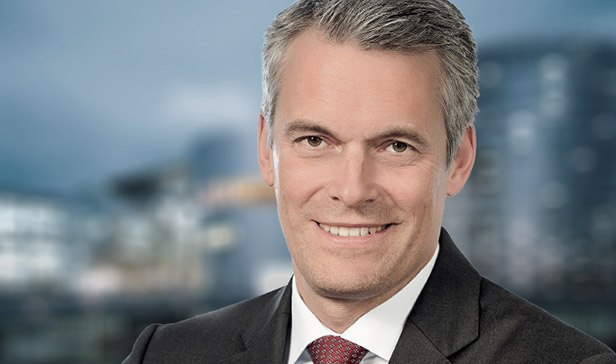Apleona CEO Jochen Keysberg does not think much of digital showcase real estate, as it generates high costs, but ultimately results only in data cemeteries. When digitalizing building operations, he relies on cloud-based, modular systems with open interfaces. Every user always needs the right selection from the service range.
There is no point in installing sensors but not giving any thought to how the data is used, Keysberg said at the 15th Irebs Real Estate Symposium in Regensburg on Saturday in the run-up to Expo Real. “Many smart building showcase projects end up as data cemeteries – the data is sent somewhere, but in the end, nobody knows what it’s for.” Keysberg does not regard the attempt to use building information modeling (BIM) in the operating phase as very useful. “I don’t need precise readings down to the nearest millimeter from the building model. We use a digital building model ourselves – but an extremely simple one.” Moreover, the process of maintaining the data for a digital twin that is too sophisticated simply cannot be financed in the operational phase of a property.
“Of the real estate we deal with in our day-to-day business, 98% cannot be described as smart buildings,” said Keysberg. He sees cloud-based, modular IT systems that many service providers can dock to using open interfaces as a practical solution for offering cost-effective digital building services, including in existing buildings. Apleona itself entered into a development partnership with IBM Business Services a year ago in order to offer its customers more digital building solutions.
However, Keysberg went on to say that, in his view, building digitalization is worthwhile only if either enormous efficiency gains can be achieved or a solution can be scaled very quickly; in other words, it can be rolled out to many users. “It is not always possible to sell the end-to-end solution,” he added. “Digitalization must always be tailored precisely to the real estate in question and its users.” As examples of day-to-day business, Keysberg cited a sensor application for a major German bank and the new Siemens campus in Erlangen, for which Apleona will be responsible starting in 2020. Apleona intends to optimize space utilization there, among other things.
“It is no coincidence that I mentioned large corporates as examples,” said Keysberg. “The fixed costs of digital building systems are extremely high. So it is usually not worth it if you digitally equip just two floors.” That said, the use of digital services could also lead to savings for all partners involved in building operation, as fewer follow-up checks are required. “The more real-time monitoring of the building and the services provided is possible via the collection of digital data, the less we need conventional governance models.” Ulrich Schüppler, Immobilien Zeitung

